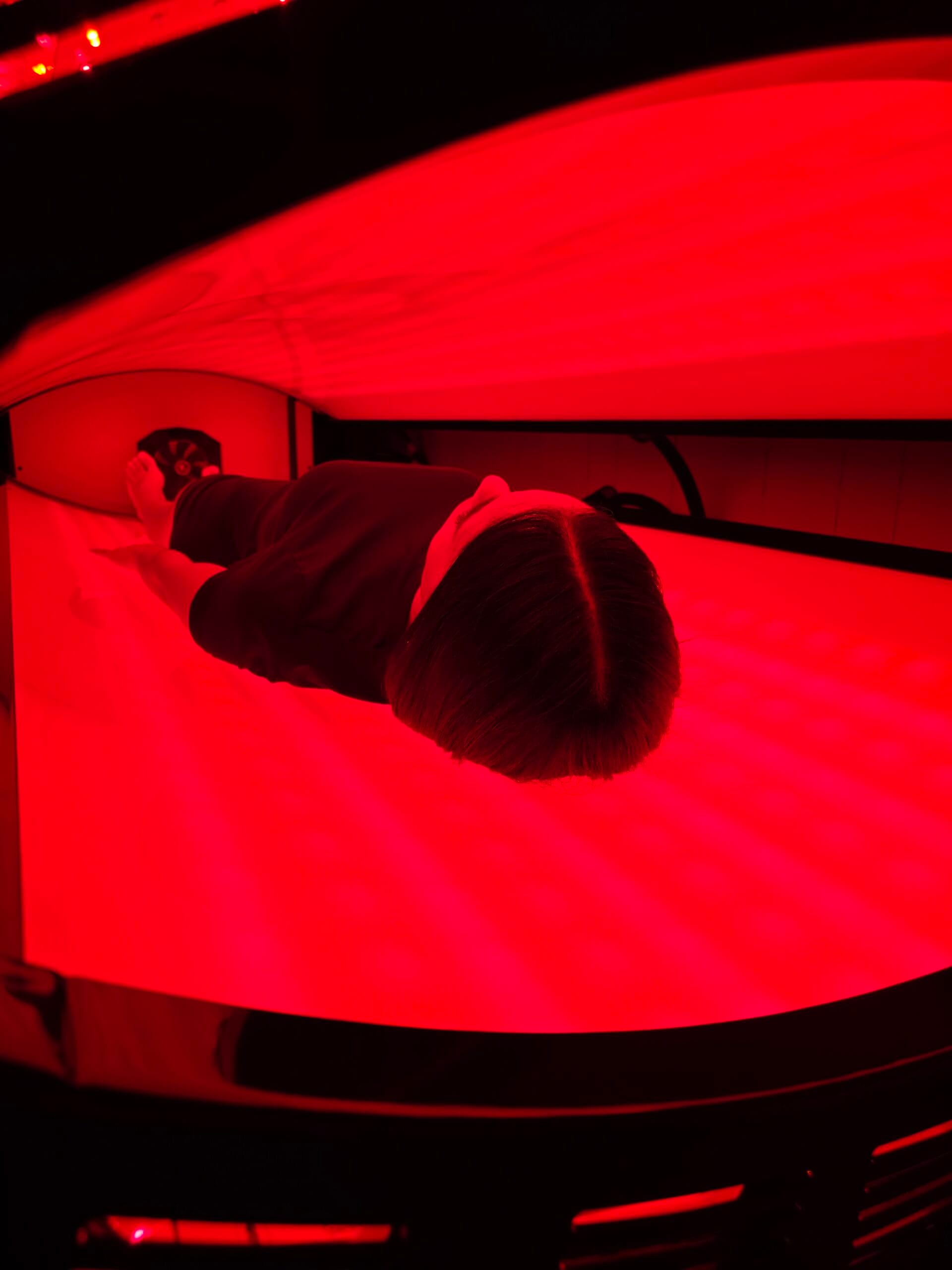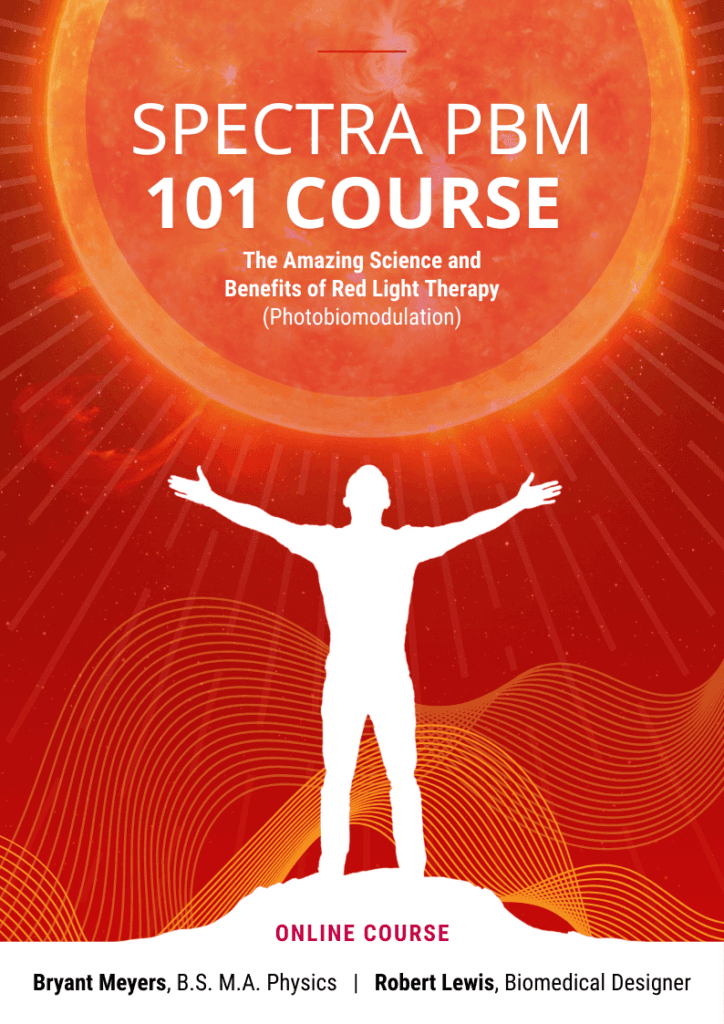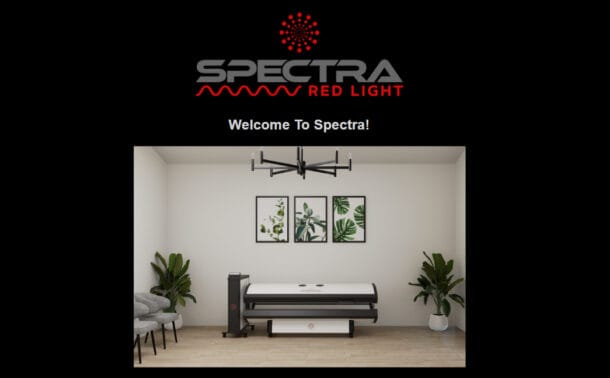The stroke recovery journey can be made easier with Red Light Therapy. Every year, about 15 million people around the world suffer a stroke, and nearly 5 million are left with long-term disabilities, according to the World Health Organization (WHO) [1]. A stroke happens when blood flow to part of the brain is suddenly blocked or when a blood vessel in the brain bursts. This can lead to brain cell damage and cause serious challenges such as muscle weakness, trouble with movement, memory problems, and emotional changes.
Recovery after a stroke often depends on the brain’s natural ability to heal and reorganize, a process known as neuroplasticity. While therapies like physical and occupational therapy play a key role in rehabilitation, many people find that progress is slow and sometimes incomplete. This is where Red Light Therapy (RLT) is showing exciting potential as a supportive option to enhance recovery.
Red Light Therapy is a non-invasive therapy that uses specific wavelengths of red and near-infrared light. These light waves can safely penetrate through the skin and are absorbed by tiny structures inside cells called mitochondria, specifically, an enzyme called cytochrome c oxidase. This absorption triggers a chain reaction in the body, boosting energy production (in the form of adenosine triphosphate, or ATP), reducing harmful molecules known as reactive oxygen species (ROS), and balancing the body’s inflammatory response. These effects are essential for helping brain cells survive, reducing further damage, and supporting the growth of new blood vessels and nerve connections.
For stroke survivors, these biological actions may help improve movement, lessen stiffness and pain, and promote better overall recovery. As research into Red Light Therapy continues, this scientifically backed, gentle therapy offers new hope for supporting the body’s own healing processes and improving quality of life after a stroke.
Benefits of Red Light Therapy in Stroke Rehabilitation
Red Light Therapy (RLT) offers a range of scientifically supported benefits that target multiple aspects of stroke recovery. By acting at the cellular and molecular levels, RLT enhances the brain’s intrinsic healing processes, helping stroke survivors regain function and improve their quality of life. Below are the key benefits explained through their underlying biological mechanisms.
Neuroprotection: Preserving Neurons at Risk
One of the most critical challenges after a stroke is preventing further neuronal loss in the affected brain regions. Red Light Therapy promotes neuroprotection by:
- Boosting mitochondrial activity to increase adenosine triphosphate (ATP) levels, ensuring that energy-deprived neurons can maintain their function.
- Reducing oxidative stress by modulating reactive oxygen species (ROS) and upregulating antioxidant enzymes like superoxide dismutase (SOD).
- Inhibiting apoptosis (programmed cell death) through the downregulation of pro-apoptotic factors, helping to preserve vulnerable neurons in the ischemic penumbra.
Enhanced Cerebral Blood Flow: Improving Oxygen and Nutrient Delivery
Restoring and maintaining an adequate blood supply to the recovering brain is vital. RLT supports vascular health by:
- Stimulating the release of nitric oxide (NO), a potent vasodilator that relaxes blood vessels and improves microcirculation.
- Encouraging angiogenesis, the formation of new capillaries, which enhances oxygenation and nutrient delivery to damaged tissues.
This dual action helps sustain tissue viability and supports ongoing recovery efforts.
Promotion of Neurogenesis: Facilitating Brain Repair
The brain’s ability to regenerate neurons, though limited, can be enhanced with Red Light Therapy. Studies indicate that RLT:
- Upregulates brain-derived neurotrophic factor (BDNF), a protein essential for neuronal growth and differentiation.
- Stimulates progenitor cell proliferation in neurogenic zones like the hippocampus, fostering the creation of new neurons to replace those lost during the stroke.
This regenerative effect may translate into improved cognitive and motor function over time.
Synaptogenesis: Rebuilding Neural Networks
Stroke disrupts neural pathways, making it crucial to rebuild lost connections. Red Light Therapy aids this process by:
- Enhancing synaptogenesis, the formation of new synaptic connections between neurons, is critical for restoring motor skills, speech, and cognitive functions.
- Strengthening neuronal signaling efficiency and improving communication across newly established neural networks.
Reduction of Pain and Spasticity: Easing Physical Barriers to Recovery
Post-stroke complications such as muscle spasticity and neuropathic pain can hinder rehabilitation progress. RLT has been shown to:
- Modulate nociceptive pathways by reducing pro-inflammatory mediators that sensitize nerve endings.
- Decrease muscle hypertonicity by improving local circulation and cellular repair, which can help alleviate spasticity and discomfort.
Psychological Benefits: Supporting Mental Health
Beyond physical recovery, RLT may also play a role in emotional well-being. By improving cellular energy production and reducing neuroinflammation, RLT may help mitigate symptoms of:
- Post-stroke depression, by supporting healthier neuronal environments and neurotransmitter balance.
- Anxiety and fatigue, through overall enhancement of brain function and vitality.
Red Light Therapy’s benefits in stroke rehabilitation are multifaceted, addressing:
- Neuronal survival and protection
- Improved blood flow and oxygenation
- Brain cell regeneration and connectivity
- Relief of secondary symptoms such as spasticity and pain
- Enhancement of mental and emotional resilience
By supporting these critical processes, RLT offers stroke survivors a scientifically grounded tool to complement traditional rehabilitation strategies and optimize recovery outcomes.

Understanding Stroke and Brain Injury
A stroke occurs when the brain’s blood supply is interrupted, either by a blockage (ischemic stroke) or bleeding (hemorrhagic stroke). Ischemic strokes, which account for about 87% of cases, result from a clot or narrowed artery cutting off oxygen and nutrients to brain tissue. Without oxygen, neurons and supporting glial cells begin to die within minutes, triggering a cascade of harmful biological processes.
At the core of stroke-related brain injury is ischemia-induced excitotoxicity, where excess glutamate, a key neurotransmitter, overstimulates receptors, leading to an influx of calcium ions into neurons. This overload damages cellular structures and activates enzymes that degrade proteins, lipids, and nucleic acids. Simultaneously, oxidative stress increases as reactive oxygen species (ROS) and nitrogen species overwhelm the brain’s natural antioxidant defenses, exacerbating tissue damage. Inflammation also plays a significant role, as activated microglia and astrocytes release pro-inflammatory cytokines, further contributing to cell death and inhibiting repair mechanisms.
Beyond the initial injury, stroke survivors face secondary challenges. These include impaired neurogenesis (the formation of new neurons), reduced synaptic plasticity (the ability of neurons to form new connections), and vascular dysfunction that limits proper blood flow and oxygenation in recovering brain regions.
Standard rehabilitation therapies, such as physical, occupational, and speech therapy, are designed to promote neuroplasticity, helping the brain rewire itself to compensate for lost functions. However, these methods rely largely on the body’s natural ability to heal, which can be limited, especially in cases of severe injury.
This is where Red Light Therapy may offer valuable support. By stimulating cellular energy production and modulating harmful processes like oxidative stress and inflammation, Red Light Therapy works at the cellular and molecular level to create an environment more conducive to brain healing. Research suggests that Red Light Therapy can enhance neurogenesis, encourage synaptogenesis (the formation of new synapses), and improve microcirculation, key processes that help restore brain function after a stroke. By addressing both the initial injury and ongoing challenges, Red Light Therapy presents a promising addition to the toolbox for stroke recovery.
The Mechanism of Red Light Therapy
Red Light Therapy (RLT), also known scientifically as photobiomodulation (PBM), utilizes specific wavelengths of red and near-infrared light to stimulate beneficial biological responses in the body. What makes this therapy especially promising for stroke recovery is its ability to influence cellular and molecular processes that are critical for brain repair and regeneration.
At the core of Red Light Therapy’s mechanism is the absorption of photons by cytochrome c oxidase (CCO), a key enzyme in the mitochondrial electron transport chain. Mitochondria are the “powerhouses” of the cell, responsible for producing adenosine triphosphate (ATP), the primary energy currency. When CCO absorbs red and near-infrared light, it enhances mitochondrial respiration, leading to increased ATP production. This surge in cellular energy is essential for neurons and glial cells, which require high energy levels to survive, repair, and maintain function after the oxygen deprivation caused by a stroke.
In addition to boosting ATP, Red Light Therapy reduces excessive reactive oxygen species (ROS), which are harmful byproducts of cell metabolism that accumulate during ischemic injury. By modulating ROS and enhancing the activity of antioxidant enzymes like superoxide dismutase (SOD), RLT helps to limit oxidative damage, a key contributor to cell death following a stroke.
Another important effect of Red Light Therapy is the modulation of inflammation. Photobiomodulation downregulates pro-inflammatory cytokines such as tumor necrosis factor-alpha (TNF-α) and interleukin-1 beta (IL-1β), while upregulating anti-inflammatory cytokines like interleukin-10 (IL-10). This shift in the inflammatory environment is crucial for protecting neurons and supporting the healing process in damaged brain tissue.
Crucially for stroke recovery, Red Light Therapy also promotes neuroplasticity and neurogenesis. Research shows that PBM can stimulate the production of brain-derived neurotrophic factor (BDNF), a protein essential for the growth and survival of neurons. This encourages synaptogenesis, the formation of new synaptic connections, and angiogenesis, which is the development of new blood vessels that improve oxygen and nutrient delivery to recovering areas of the brain.
Red Light Therapy has been shown to enhance cerebral blood flow by stimulating nitric oxide (NO) release. Nitric oxide acts as a vasodilator, relaxing blood vessels and improving microcirculation, which is vital for delivering oxygen and nutrients to the ischemic penumbra, the area of the brain surrounding the core site of the stroke that is at risk but potentially salvageable.
Through these combined mechanisms, boosting energy production, reducing oxidative stress, modulating inflammation, and enhancing neurovascular remodeling, Red Light Therapy creates an optimal environment for brain recovery. Its non-invasive nature and ability to target underlying biological processes make it a compelling tool in the ongoing effort to improve outcomes for stroke survivors. Explore our Product Page to learn more about our RLT devices.

Scientific Evidence Supporting RLT for Stroke Recovery
The potential of Red Light Therapy (RLT) to aid in stroke recovery is supported by a growing body of preclinical and clinical research that highlights its neuroprotective and neurorestorative effects. While much of the initial evidence stems from studies on traumatic brain injury (TBI), the underlying mechanisms, such as enhancing neuroplasticity and reducing secondary brain injury, are highly relevant to ischemic and hemorrhagic stroke as well.
Preclinical Studies About RLT for Brain Health
Some studies have been particularly valuable in demonstrating how Red Light Therapy can influence brain repair. In rodent models of stroke, photobiomodulation (PBM) has been shown to reduce infarct size, improve motor function, and enhance the survival of neurons and glial cells in the ischemic penumbra. These studies confirm that RLT promotes mitochondrial ATP production, stabilizes the blood-brain barrier, and reduces levels of reactive oxygen species (ROS) and pro-inflammatory cytokines.
Clinical investigations, while still in the early stages, have provided encouraging results. Trials involving patients with stroke and TBI have documented improvements in cognitive and motor function, with no significant adverse effects reported. Notably, one study concluded:
“There is evidence that PBM can help the brain repair itself by stimulating neurogenesis, upregulating BDNF synthesis, and encouraging synaptogenesis.” [2]
(Photobiomodulation for traumatic brain injury and stroke)
Positive Effects After Red Light Therapy
These findings are echoed by a broader scientific consensus that positions RLT as a multifaceted therapy capable of addressing key barriers to recovery. Another review states:
“Brain PBM therapy enhances the metabolic capacity of neurons and stimulates anti-inflammatory, anti-apoptotic, and antioxidant responses, as well as neurogenesis and synaptogenesis.” [3]
(Brain Photobiomodulation Therapy: a Narrative Review)
How RLT Supports Brain Healing
Innovative research into near-infrared II (NIR-II) wavelengths, which penetrate deeper into biological tissues, has opened new avenues for therapy. A recent study investigating NIR-II PBM found promising results, noting:
“Near-infrared II photobiomodulation could offer a noninvasive and low-risk adjunctive therapy for stroke injury.” [4]
(Near-Infrared II Photobiomodulation Preconditioning Ameliorates Stroke Injury via Phosphorylation of eNOS)
While additional large-scale randomized controlled trials are needed to establish standardized protocols and optimize treatment parameters, the scientific foundation for Red Light Therapy in stroke rehabilitation is robust and rapidly evolving. The current evidence supports its role in enhancing neurogenesis, reducing inflammation and oxidative stress, and fostering an environment in which the brain can more effectively heal itself after a stroke.

Stroke recovery is a complex and multifaceted process that demands both time and strategic intervention. While traditional rehabilitation methods remain essential, they are often limited by the brain’s natural capacity for repair, especially in cases of significant neurological damage. Red Light Therapy (RLT), through the science of photobiomodulation, offers a promising adjunctive tool that works by targeting the fundamental biological processes involved in brain healing.
By stimulating cytochrome c oxidase in the mitochondrial respiratory chain, RLT enhances adenosine triphosphate (ATP) production, fueling energy-starved neurons and glial cells. Simultaneously, it mitigates oxidative stress by regulating reactive oxygen species (ROS) and bolsters the body’s anti-inflammatory response through modulation of cytokines. These effects are critical for preserving neuronal viability and minimizing secondary injury.
Red Light Therapy promotes neurogenesis, synaptogenesis, and angiogenesis, three vital processes for restoring lost brain function and re-establishing neural pathways. Its ability to improve cerebral blood flow via nitric oxide (NO) stimulation further supports optimal oxygen and nutrient delivery, essential for sustained recovery. Additionally, RLT offers relief from post-stroke complications such as muscle spasticity and neuropathic pain, which can otherwise hinder rehabilitation progress.
Although more large-scale clinical trials are needed to establish standardized protocols, the existing body of scientific evidence paints a hopeful picture. Red Light Therapy is a safe, non-invasive option that empowers the body’s own repair mechanisms, offering stroke survivors an opportunity for enhanced recovery and improved quality of life. As part of a comprehensive rehabilitation plan, RLT holds the potential to illuminate a brighter path forward for those navigating the challenges of stroke recovery.
References
[1] World Health Organization (WHO). “Stroke, Cerebrovascular Accident.” Accessed 2025. https://www.who.int/news-room/fact-sheets/detail/stroke
[2] Hamblin MR. Photobiomodulation for traumatic brain injury and stroke. J Neurosci Res. 2018 Apr;96(4):731-743. doi: 10.1002/jnr.24190. Epub 2017 Nov 13. Erratum in: J Neurosci Res. 2019 Mar;97(3):373. doi: 10.1002/jnr.24376. PMID: 29131369; PMCID: PMC5803455.
[3] Salehpour F, Mahmoudi J, Kamari F, Sadigh-Eteghad S, Rasta SH, Hamblin MR. Brain Photobiomodulation Therapy: a Narrative Review. Mol Neurobiol. 2018 Aug;55(8):6601-6636. doi: 10.1007/s12035-017-0852-4. Epub 2018 Jan 11. PMID: 29327206; PMCID: PMC6041198.
[4] Yokomizo S, Kopp T, Roessing M, Morita A, Lee S, Cho S, Ogawa E, Komai E, Inoue K, Fukushi M, Feil S, Kim HH, Bragin DE, Gerashchenko D, Huang PL, Kashiwagi S, Atochin DN. Near-Infrared II Photobiomodulation Preconditioning Ameliorates Stroke Injury via Phosphorylation of eNOS. Stroke. 2024 Jun;55(6):1641-1649. doi: 10.1161/STROKEAHA.123.045358. Epub 2024 Apr 4. PMID: 38572660; PMCID: PMC11126363.


